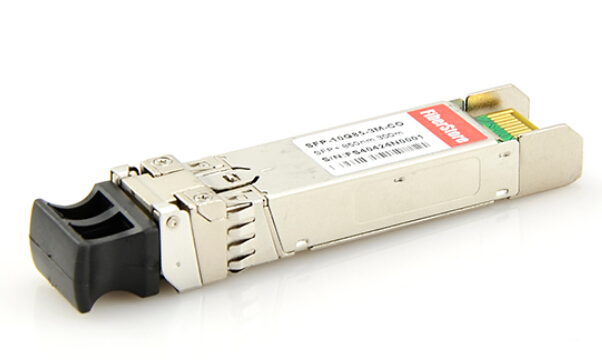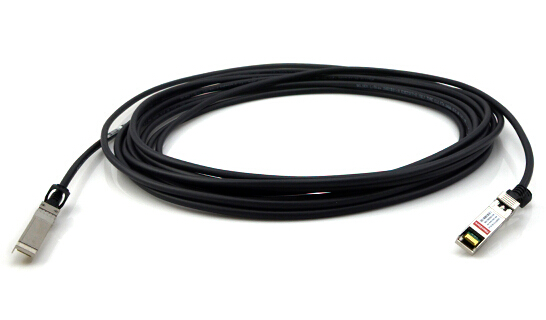Fiber Optics Solutions
petak, 26.06.2015.
Making the Case for 10 Gigabit Ethernet
Several factors make 10GbE implementations a compelling option, including interoperability, cost efficiency, low power consumption, communication quality, and hardware availability. Each of these factors merits careful consideration.
Interoperability Leveraging Existing Technology
During infrastructure upgrades, 10GbE and the TCP/IP protocol are designed to interoperate seamlessly with GbE links, enabling a relatively easy and nondisruptive transition to 10GbE. Two different types of 10GbE connectors are expected to facilitate these links, including 10GBase-T copper and the 10GbE small form-factor pluggable+ (SFP+) interconnect. SFP+ supports different physical port types such as 10GBASE Twinax copper and various types of fiber connections.
By helping ensure that the 10GbE components can cooperatively communicate with GbE devices, switch vendors can deliver interoperability between GbE and 10GbE. Data transitioning from 10GbE to GbE links potentially requires additional buffering on the 10GbE switch to temporarily store the data while it is being transmitted to a low-speed device. In addition, support can be provided for the expected Ethernet standard pause frames (IEEE 802.3x) and priority flow control standards that are part of the enhanced Ethernet standards.
Cost Efficiency Resulting from Fewer Connections
Over time, as 10GbE becomes commonplace, one 10GbE port is expected to be more cost-efficient than multiple GbE ports and Fibre Channel ports. Current GbE storage normally requires multiple ports to provide acceptable storage bandwidth between hosts and arrays. Based on industry best practices for redundancy, a minimum of two connections are used to provide a failover path between host and storage. Additional bandwidth may be required by the application—for example, the performance of sequential data applications such as data warehouses is typically gated by bandwidth. Another best practice is to isolate storage traffic on the SAN from client/server traffic on the LAN, which requires a separate LAN port. Dedicated management ports are often required as well. Just two 10GbE connections (for minimal redundancy) in conjunction with enhanced Ethernet standards such as DCB can handle these requirements while still upholding the best practices just described.
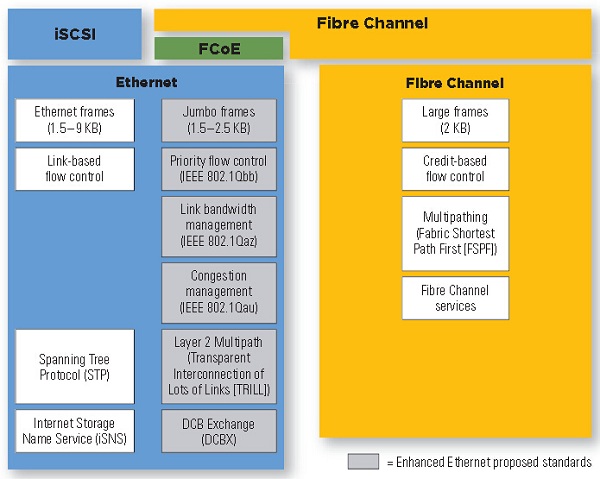
Figure 1. Transitioning to 10GbE with iSCSI, Fibre Channel, and FCoE connections
Low Power Consumption with SFP+ optics
Since the 10GBase-T standard was adopted in 2007 for twisted-pair copper cabling, efforts have been underway to help reduce 10GBase-T power consumption—with a goal of reaching power levels per port that are equivalent to the current 1GBase-T standard. First-generation 10GBase-T adapters have higher wattage demands than their short-reach optical counterparts. Currently, prototype second-generation 10GBase-T implementations are designed to bring wattage demand per port down to reasonable levels.
10GbE SFP+, which today is an early implementation choice for network and storage vendors such as Dell, Cisco, HP, etc. that has very low wattage requirements per port, and SFP+ direct attach copper cable can provide a power-efficient, cost-effective 10 m cabling reach between rack-mounted servers and a top-of-rack switch.
In SFP+ direct attach connections, the module is built into the cables (SFP+ cable). This effort, along with the reduction in the number of separate connections required to manage multiple networks, should help significantly reduce the power requirements of the network.
Communication Quality with Compliant Standards
The Data Center Bridging (DCB) standard is expected to encompass several IEEE 802.1 standards to help ensure communication quality for 10GbE and iSCSI deployments. Priority flow control (802.1Qbb), a link-level flow-control mechanism, is designed to ensure zero loss under congestion in DCB networks. Another standard, 802.1Qau, is intended to provide end-to-end congestion management.
Hardware Availability to Mix GbE and 10GbE
Hardware is available today for mixing GbE and 10GbE. For example, the Dell PowerConnect M8024 blade I/O switch modules can configure ports to run at GbE or 10GbE speeds and provide several options for physical connection types; SFP+ optics use in GbE and 10GbE Ethernet links, such as the Finisar FTLX8571D3BCV 1G/10G Dual-Rate SFP+ optical transceiver over multimode fiber and FTLX1471D3BCV 1G/10G Dual-Rate SFP+ optical transceiver link length up to 10km over singlemode fiber. When used in conjunction with an external 10GbE switch, such as the planned PowerConnect 8024F SFP+ switch, and legacy GbE switches, such as the PowerConnect 6200 series, this hardware is expected to offer several options for configuring iSCSI storage solutions that utilize mixed Ethernet speeds.
Refers to Dell Mixing Gigabit Ethernet and 10 Gigabit Ethernet in a Dedicated SAN Infrastructure
Oznake: Gigabit Ethernet, SFP+ cable, FTLX8571D3BCV, FTLX1471D3BCV
srijeda, 29.04.2015.
Muse on 10G SFP modules
As 10Gb SFP+ cables and transceivers have become more common in the current data centers, the issue of vendor lock or encryption might become a problem for data center technicians. This paper discusses the working principle which is used to implement the encryption, why it's employed and the way to overcome it.
2-wire Serial Interface
SFP+ cables and transceivers use a 2-wire serial interface (called I2C) so that the network equipment to poll a specific port and obtain specifics about the cable or transceiver that's connected to that port. This interface can also be known as the Digital Diagnostic Management Interface, Digital Diagnostic Monitoring Interface or DDMI.
The DDMI provides specifics about the cable or transceiver assembly including vendor, serial number, part number, and date of manufacture which is stored in a memory chip or microprocessor inside the cable assembly.
EEPROMs Information
SFP+ passive cables contain EEPROMs inside the connector back shell which have I2C ports. These cables can also be known as SFP+ DAC or SFP+ direct attached Twinax copper cables. An EEPROM is an "Electrically Erasable Programmable Read-Only Memory" chip which is programmed within the factory with precise information about the cable assembly.
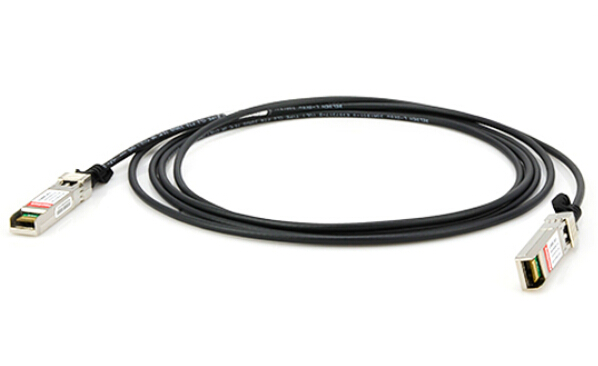
SFP+ active copper cables and fiber optic transceivers contain microprocessors inside the connector back shell. The microprocessor has memory which is available to the network through the 2-wire I2C interface. For active cables and transceivers, the interface allows real-time access to device operating parameters and includes alarm and warning signs, which alert the device when particular operating parameters are away from the factory settings.
Ordinarily, these EEPROMs and microprocessors abide by the SFF or Small Form Factor standards, which define the I2C interface protocol and allocate certain information to a particular memory location.
Vendor Lock and Encryption
Some vendors incorporate encryption or "vendor lock" inside their equipment that will issue an alert message if a non-vendor approved cable assembly is plugged into a port. In theory, this makes sure that devices manufacturers will not need to troubleshoot problems due to sub-standard cables. Oftentimes, devices vendors using encryption charge more for their own cords since they lock out use of other cords. In fact, encryption is unnecessary as all reputable manufacturers of SFP+ cables and transceivers meet the standards that IEEE and SFF have founded for SFP+ and interoperability isn't important. Most network equipment vendors that employ encryption allow a work around as long as the customer acknowledges the warning. As an example, the customer might have to acknowledge that he understands the warning and he can accept it before moving on.
Fiberstore’s Cisco Compatible SFP+ Cables Solution
Fiberstore is a professional OEM manufacturer and supplier of Cisco compatible SFP+ cables. Fiberstore has offered industry standard SFP+ cables for many years that have been tested by the UNH Interoperability lab and confirmed to be compatible with Cisco and equipment from other major vendors. The following figure shows 10G SR SFP+ 850nm module:
Compatible SFP+ Cable Part Numbers
- SFP-H10GB-CU1M 1 meter (3 ft), Wire AWG = 30, SFP+ Passive Copper Cable Assembly, Double-ended
- SFP-H10GB-CU1-5M 1.5 meter (5ft), Wire AWG = 30, SFP+ Passive Copper Cable Assembly, Double-ended
- SFP-H10GB-CU2M 2 meters (6.5 ft), Wire AWG = 30, SFP+ Passive Copper Cable Assembly, Double-ended
- SFP-H10GB-CU2.5M 2.5 meters (8ft), Wire AWG = 30,SFP+ Passive Copper Cable Assembly, Double-ended
- SFP-H10GB-CU3M 3 meters (9ft), Wire AWG = 30, SFP+ Passive Copper Cable Assembly, Double-ended
- SFP-H10GB-CU5M 5 meters (16ft), Wire AWG = 24, SFP+ Passive Copper Cable Assembly, Double-ended
Fiberstore’s Cisco compatible SFP+ passive copper cables use proprietary encryption within the assembly’s EEPROM to prevent the warning messages that Cisco equipment may produce when non-Cisco approved cables are plugged in. This enables data center designers to prevent unwarranted concern which may be related to startups when the users see these warning messages. Fiberstore’s cables meet the industry standards for SFP+ cables and are offered in the same lengths and wire gauges as Cisco DAC assemblies, but at a significant cost reduction.
Oznake: SFP+ cable, optical transceiver, 10g sfp module
ponedjeljak, 23.03.2015.
10GBASE-T vs SFP+ DAC
Eight years ago, the networking industry was gearing up for massive uptake of copper-based 10 Gigabit Ethernet (GbE) using 10GBase-T. As a result, we are seeing the expansion of higher speed Ethernet solutions, specifically 10 and 40 gigabit Ethernet.
In particular to 10 gigabit Ethernet (10GbE), which is booming with new applications accentuating the differences between Ethernet adapter designs, copper is back on the 10GbE menu. Only now the copper option is in a newer format called SFP+ Direct Attach Cable, which uses twin-axial copper cable and plugs into the SFP+ receptacles also used for fibre optics.
These questions were asked by network switch users. Maybe you have the same question. What's the main difference when you choose the 10GBASE-T or SFP+ DAC?
10GBase - T
10GBase - T – IEEE standard 802.3an - 2006 for operation at 10 gigabits per second over Cat 5/6/7 twisted pair cable at distances up to 100 meter. 10GBase-T works at 100 meters for Cat6A or Cat7 cable, and up to 50 meters for Cat6, Cat 5E, or even Cat 5 cable.
In the early days of Ethernet there were several PHY standards, including various forms of coaxial cable, but Ethernet only gained widespread adoption once it was run on twisted pair cable, and as point - to - point rather than an unstructured loop. It became practical to run an Ethernet cable to each desktop alongside the phone cable, and make all the connections in a wire closet. The connector used for twisted pair was the RJ45 connector.
Many IT managers are now evaluating the newly refreshed 10GBase-T technology, as the perception is that 10GBase-T is cheaper and easier to deploy than the alternative SFP+ technologies.
SFP+ DAC
Instead of installing
an optical transceiver at each end plus a length
of fiber optic cable
, a cable was invented with
each end physically resembling an SFP+
transceiver, but with none of the expensive
electronic components. A small component is
required to identify cable type to the SFP+ host,
but its cost is negligible. This innovation, call
ed
either Direct Attach Cable (DAC cable) or twinax, is a
low cost solution for shorter distances, while
keeping the high
-
density equivalent to RJ45
connectors.
The following table compares these two technologies:

Two microseconds may not seem high at first; however, if we imagine a TOR infrastructure where traffic is passing 4 hops to reach the destination, as much as 10.4usec delay is introduced when using 10GBase-T. This is a significant performance penalty compared to using 1.2usec introduced by the SFP+ DAC technology.
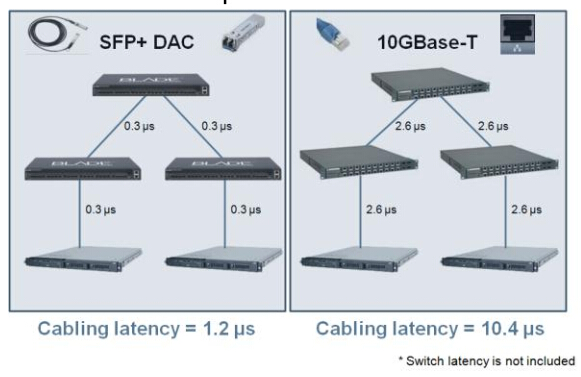
The 10GBase-T delay becomes the same order of magnitude as Solid State Disk latency, and therefore dramatically delays data delivery by nearly 50 percent. High latencies in the data center infrastructure results in delays in CPU and application works, therefore limiting data center efficiency and increasing operational costs.
10GBase - T advantages:
- Longer distance - 100 meters vs. 8.5
- Familiar RJ45 connectors and Cat 5/6/7 cables
- Use of patch panels and structured wiring - Backward compatibility to 1 gigabit Ethernet or 100 megabit Ethernet
SFP+ with DAC advantages:
- Significantly lower overall cost, when you include switch, NIC and cable
- Lower latency – 300 ns per hop vs. 2.6 us per hop
- Lower power and lower heat
- Freely intermix fiber and DAC to meet distance requirements
For data centers, the advantages of SFP+ with DAC are a very good match for today’ s requirements and emerging trends. That’s why SFP+ with DAC is being adopted rapidly as best practice for new data centers. For wiring closets, 10GBase - T will be the obvious choice once the demand for bandwidth becomes more acute and once the price and p ower for 10GBase - T technology comes down.
Fiberstore Meida Options for 10 Gigabit Ethernet
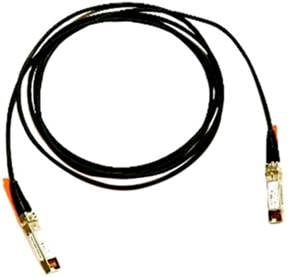 Fiberstore is a professional OEM manufacturer and supplier of optical networking solutions. Cisco compatible SFP+ modules provided by Fiberstore give you a wide variety of 10 Gigabit Ethernet connectivity Meida options for data center, enterprise wiring closet, and service provider transport applications, such as Cisco SFP+ Twinax Copper Cables, Cisco SFP+ active optical cables:
Fiberstore is a professional OEM manufacturer and supplier of optical networking solutions. Cisco compatible SFP+ modules provided by Fiberstore give you a wide variety of 10 Gigabit Ethernet connectivity Meida options for data center, enterprise wiring closet, and service provider transport applications, such as Cisco SFP+ Twinax Copper Cables, Cisco SFP+ active optical cables:
- Cisco SFP-H10GB-CU1M, Up to 10.5G, 1m AWG30, passive copper
- Cisco SFP-H10GB-CU1-5M, Up to 10.5G, 1.5m; AWG30, passive copper
- Cisco SFP-H10GB-CU2M, Up to 10.5G, 2m; AWG30, passive copper
- Cisco SFP-H10GB-CU3M, Up to 10.5G, 3m; AWG30, passive copper
- Cisco SFP-H10GB-CU5M, Up to 10.5G, 5m; AWG24, passive copper
- Cisco SFP-10G-AOC1M, SFP+ AOC, fiber, 10G, 1m
- Cisco SFP-10G-AOC3M, SFP+ AOC, fiber, 10G, 3m
Oznake: 10Gbase-T, SFP+ DAC, SFP+ cable
petak, 06.03.2015.
Worldwide Active Optical Cable Market Forecast
With the advent of the big-data age, the cloud technology has developed rapidly. In order to satisfy the demands of higher bandwidth and more applications in a variety of cloud computing environments, a new type of cable has emerged, such as SFP+ DACs (eg. SFP+ AOC, passive SFP+ cable, active SFP+ cable). Nowadays, the market of AOCs keeps growing and has a broad prospect. Today, Fiberstore blog will introduce the AOCs and discuss its prospect forecast.
What's Active Optical Cable (AOC)?
Active Optical Cable (AOC) is used for short-range multi-lane data communication and interconnect applications. In fact, the wire transmission of optical communication should belong to passive part, however, AOC is special. AOC integrates multimode optical fiber, fiber optic transceivers, control chip and modules. It uses electrical-to-optical conversion on the cable ends to improve speed and distance performance of the cable without sacrificing compatibility with standard electrical interfaces. As people expect more information to be available at their fingertips, our communications systems will need to be quicker, and AOC is one of the best solutions to this challenge. Compared with common cable for data transmission, AOC provides more advantages, such as lighter weight, high performance, low power consumption, low interconnection loss, EMI immunity and flexibility. With its benefits, AOC is widely used in many fields as well as promoting the traditional data center to step into optical interconnection. Now, market of AOCs is booming.

Development of AOCs
Primarily, active optical cable (AOC) assemblies were invented to replace copper technology in data centers and high performance computing (HPC) applications. As we know, copper cable is heavy and bulky, making it difficult to physically manage the datacenter. And due to the nature of electrical signals, electromagnetic interference (EMI) limits copper’s performance and reliability. Though there are so many disadvantages of copper cable, at that time, it is the main stream while the idea of AOCs almost seems too good to be true. However, the advantages of AOC make the predecessors look obsolete and unsophisticated, and changes the limitation of copper cable as well as playing an important role in high speed data transmission. Nowadays, a variety of AOCs have been launched in the market, such as 10GbE SFP+ AOCs, 40Gbps QSFP+ AOCs and 120G CXP AOCs, for 10G, 40G and 100G applications.
Comparison of Passive, Active, Copper and Fiber
Passive cabling provides a direct electrical connection between corresponding cable ends. Active cables provide the same effect but, by embedding optics and/or electronics within the connectors, can overcome some of the limitations of passive cables. While passive cables are always copper-based, active cables can use either copper wire or fiber optics to provide the link between the cable ends. About the difference between copper and fiber, we have talked above. The following picture shows us the leading types of passive and active cables for data center.

Prospect of AOCs
AOCs market has continued to grow and attract new entrants, including some of the world's biggest suppliers of cabling and telecom components. The market and application prospect of AOCs will have a broader development, said Brad Smith, Senior Vice President and Lead Analyst, LightCounting as, "AOCs are positioned to become ".a disruptive force in telecommunications and datacom transceiver markets in the near future."
According to the newest report, sales of active optical cables (AOCs) for the data center will produce $1.5 billion in revenues by 2019. The application fields of AOCs are mainly in data center and have a large proportion. Additionally, in HPC, consumer electronics, HDMI and digital signage, AOCs are also increasing in application. The application of active optical cables (AOC) in future data center will focus on high speed transmission, such as 40Gbps, 100Gbps and even InfiniBand.
The following diagram shows the worldwide AOC market forecast by MSA, from 2014-2020. AOC market keeps growing and developing.

Applications of AOCs
In general, AOC assemblies can be used on optical backplanes, rack-to-rack, shelf-to-shelf interconnect, storage, hubs, switches, routers, servers, etc.
- InfiniBand QDR, DDR and SDR interconnects
- Data Aggregation, Backplane and Proprietary Density Applications
- PCI-Express, SAS/SATA, Fiber Channel compatible interconnect
- 40GBE and 10GBE interconnects
- 10G, 40G Telecom connections
- Hubs, switches, routers, servers
- Ethernet 10G, 40G
- Data Centers
- High Performance Computing clusters
Fiberstore AOCs Solution
 Fiberstore's AOCs achieve high data rates over long reaches which are the best solutions for high-performance computing and storage applications. We supply AOC products such as 10G SFP+ AOCs, 40G QSFP+ AOCs, QSFP to SFP+ active cable, QSFP+ to 8 x LC AOCs and 120G CXP AOCs etc. In addition, custom cables are available in various lengths, Cisco compatible and other options. Recently, Fiberstore has cut the price of its direct attach cable (DAC) products in order to offer a more cost-effective high speed transmission solution for the old and new customers. Most of the AOCs and other DAC products have a price reduction varied from 10% to 20% and even more. For more detailed information, please visit our latest news or contact us over E-mail sales@fiberstore.com.
Fiberstore's AOCs achieve high data rates over long reaches which are the best solutions for high-performance computing and storage applications. We supply AOC products such as 10G SFP+ AOCs, 40G QSFP+ AOCs, QSFP to SFP+ active cable, QSFP+ to 8 x LC AOCs and 120G CXP AOCs etc. In addition, custom cables are available in various lengths, Cisco compatible and other options. Recently, Fiberstore has cut the price of its direct attach cable (DAC) products in order to offer a more cost-effective high speed transmission solution for the old and new customers. Most of the AOCs and other DAC products have a price reduction varied from 10% to 20% and even more. For more detailed information, please visit our latest news or contact us over E-mail sales@fiberstore.com.
Article Source: Active Optical Cable (AOC) – A Rising Star of Telecommunications & Datacom Transceiver Markets
Oznake: SFP+ cable, AOC cable, SFP-10G-AOC3M
srijeda, 04.03.2015.
Direct-attach Cable Market Research 2014
Today's enterprise data center networks are undergoing an infrastructure transformation, requiring higher speeds, greater scalability, and higher levels of performance and reliability to better respond to new business requirements. The 10 Gbps Direct Attached cable (1 m, 3 m, 5 m) is optimized to fully leverage Brocade 10 Gbps solutions.
Active Optical Cable market research Report
The Active Optical Cable market faced many challenges in 2011 from numerous consolidating acquisitions, to the entry of Asian based, low cost suppliers pummeling prices, earthquakes and tsunamis in Japan, to flooding of manufacturing sources in Taiwan and lastly ip battles over who owns what. Stability was regained in 2012 and growth continued strong through the year. But everyone likes the best party and today LightCounting counts 26 players from the AOC market. After a peaceful time period of acquisitions, Mellanox surprised many with its acquisitions of a silicon photonics and a transceiver IC company in early 2013.
In 2012, the market grew 65%, blowing out our previous forecast. It was on top of a stellar 2011. A key difference was the quicker than anticipated up-tick of the 14G InfiniBand FDR AOC segment. We now predict the AOC market to increase 30% to $150 million in 2013.
The InfiniBand market represents the biggest share today and it has already moved on to 14G FDR QSFP+ while traditional Data Centers is sticking with 10G QSFP+ formats. Other protocols with potential AOC opportunities, like SAS, Fibre Channel and PCI Express remain potential markets as their data rates pass 10G.
Copper Cables Mate With Fiber Optic Modules
Interchangeable and hot-swappable with fiber optic modules, the company's SFP+ active direct-attach copper cable assemblies are cost-effective choices to fiber optic transceivers and MPO cables in 10-Gb Ethernet, 8-GB Fibre Channel, and InfiniBand apps. Their active design enables a power consumption of 500 mW per cable end. Active cables also incorporate Rx LOS and Tx disable functionality. All SFP+ cable assemblies meet the MSA spec for signal integrity. Both passive and active cables are available in wire gages from 24 AWG through 30 AWG and incorporate a 360 cable braid-crimp termination that suppresses EMI leakage and offers strain relief.
Increasingly more protocols are moving to higher line rates where copper links start to have issues with reach and EMI and where AOCs offer strong advantages of high data rate, long reach and low price. That is fueling the AOC business, and as a result, facilitating segment growth. Ultimately, there are significant growth and spreading within all facets of the high-speed interconnect market.
Cisco SFP+ Cables For 10 Gigabit Ethernet
SFP+ Direct Attach cable (10GBASE Twinax) is broadly applied in storage, data, and high-performance computing connectivity. The following list is the connector type information and cabling specifications for each Cisco SFP+ DAC cables:
- Cisco SFP-H10GB-CU1M, SFP+ passive Twinax cable assembly, AWG30, 1-meter.
- Cisco SFP-H10GB-CU1-5M, SFP+ passive Twinax cable assembly, AWG30, 1.5-meter.
- Cisco SFP-H10GB-CU3M, SFP+ passive Twinax cable assembly, AWG30, 3-meter.
10GBASE SFP+ Active Optical Cable
- Cisco SFP-10G-AOC1M, SFP+ direct-attach Active Optical Cable, 3.3V power supply, 1-meter.
- Cisco SFP-10G-AOC3M, SFP+ direct-attach Active Optical Cable, 3.3V power supply, 3-meter.
- Cisco SFP-10G-AOC5M, SFP+ direct-attach Active Optical Cable, 3.3V power supply, 5-meter.
40GBASE-CR4 QSFP+ Passive Copper Cable
- Cisco QSFP-H40G-CU1M, 40GBASE QSFP+ Passive Copper Direct Attach Cable, AWG30, 1-meter.
- Cisco QSFP-H40G-CU3M, 40GBASE QSFP+ Passive Copper Direct Attach Cable, AWG30, 3-meter.
- Cisco QSFP-H40G-CU5M, 40GBASE QSFP+ Passive Copper Direct Attach Cable, AWG30, 5-meter.
40GBASE-CR4 QSFP+ to 4SFP+
- Cisco QSFP-4SFP10G-CU1M, QSFP+ to 4 SFP+ Passive Copper Direct Attach Breakout Cable, 1-meter.
- Cisco QSFP-4SFP10G-CU3M, QSFP+ to 4 SFP+ Passive Copper Direct Attach Breakout Cable, 3-meter.
- Cisco QSFP-4SFP10G-CU5M, QSFP+ to 4 SFP+ Passive Copper Direct Attach Breakout Cable, 5-meter.
Reference:
Oznake: SFP+ cable, DAC cable, AOC cable, QSFP+ cable
| < | srpanj, 2015 | |||||
| P | U | S | Č | P | S | N |
| 1 | 2 | 3 | 4 | 5 | ||
| 6 | 7 | 8 | 9 | 10 | 11 | 12 |
| 13 | 14 | 15 | 16 | 17 | 18 | 19 |
| 20 | 21 | 22 | 23 | 24 | 25 | 26 |
| 27 | 28 | 29 | 30 | 31 | ||
Srpanj 2015 (1)
Lipanj 2015 (4)
Svibanj 2015 (3)
Travanj 2015 (13)
Ožujak 2015 (10)
Veljača 2015 (8)
Siječanj 2015 (9)
Prosinac 2014 (4)
Dnevnik.hr
Gol.hr
Zadovoljna.hr
Novaplus.hr
NovaTV.hr
DomaTV.hr
Mojamini.tv
About Me
Ima Blogger, Just Share Various Fiber Optic Telecom Network Topics, Information, News, Questions, Sources and Network Solutions.
